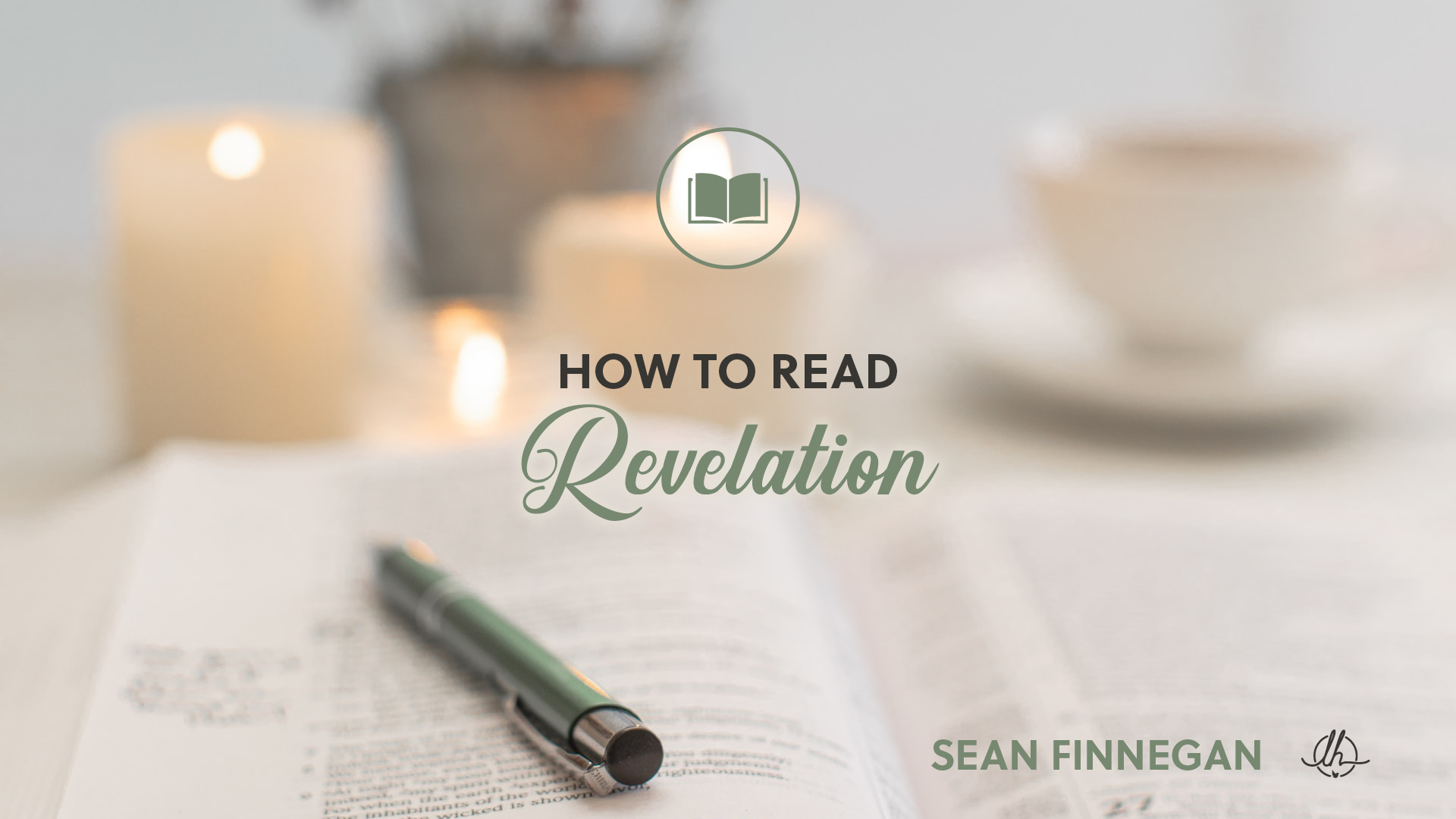549 Read the Bible for Yourself 16: How to Read Revelation
Description
This is part 16 of the Read the Bible For Yourself.
Revelation is a complicated book of the Bible. It contains some of the most incredible and awe-inspiring descriptions of God's throne room and the final paradise on earth. It also describes sinister mayhem, wanton destruction, and toe-curling persecution. How can we make sense of it? In today's episode we'll go over the basics of authorship, audience, occasion, and purpose. Then we'll explore how Revelation uses visionary symbols to convey truth. Lastly, we'll go over five interpretive lenses through which you can understand the timing of the events in Revelation. We may not settle every issue, but my hope is that this overview will at least prepare you to read Revelation for yourself.
Listen to this episode on Spotify or Apple Podcasts
https://youtu.be/98OFG5OSjNE?si=jcN6wZnbeqavNFRi
—— Links ——
- See other episodes in Read the Bible For Yourself
- Other classes are available here, including How We Got the Bible, which explores the manuscript transmission and translation of the Bible
- Get the transcript of this episode
- Support Restitutio by donating here
- Join our Restitutio Facebook Group and follow Sean Finnegan on Twitter @RestitutioSF
- Leave a voice message via SpeakPipe with questions or comments and we may play them out on the air
- Intro music: Good Vibes by MBB Attribution-ShareAlike 3.0 Unported (CC BY-SA 3.0) Free Download / Stream: Music promoted by Audio Library.
- Who is Sean Finnegan? Read his bio here
—— Notes ——
How to Read Revelation
Authorship
- John is the author. (Rev 1:1-2)
- It is hard to say if this was the same John who wrote the Gospel of John and the Epistles.
- Later Christians generally believed Revelation was by the same John.
- The style, vocabulary, and themes are completely different.
- John was exiled to the island of Patmos because of his faith. (Rev 1:9)
- “The Roman government, beginning with the emperor Nero, no longer considered Christianity as a sect of Judaism, which was a legal religion in the empire. Instead, Rome began to view it as an undesirable foreign cult that was a menace to society. John’s testimony about Jesus Christ was viewed as a political crime and hence punishable under Roman law. His suffering was the price paid for obeying a different King and testifying to a different Lord.”[1]
Audience
- Rev 1:10 says John wrote to seven churches in the province of Asia Minor (western Turkey).
- These churches were in Ephesus, Smyrna, Pergamum, Thyatira, Sardis, Philadelphia, and Laodicea.
Occasion
- Ephesus: enduring well, not growing weary, having discerned false apostles well, not loving
- Smyrna: afflicted, in poverty, slandered by Jews, facing imprisonment, and martyrdom
- Pergamum: holding fast, though Antipas martyred, tempted with sexual immorality and idolatry
- Thyatira: loving, faithful, serving, enduring, tempted with sexual immorality and idolatry
- Sardis: spiritually lethargic, lack vigilance
- Philadelphia: keeping faithful despite opposition
- Laodicea: arrogant, wealthy, complacent
- Did John learn what was going on in these churches? Was that why he wrote?
- Revelation is so visionary, it’s more likely that God prompted John by giving him these visions than that he wrote to detail with specific situations like many of Paul’s epistles.
Purpose
- Encourage churches to endure through persecution as well as to correct them
- Revelation both threatens and encourages.
Mode
- Symbols dominate the visions in Revelation (Rev 1:12-20)
- The seven golden lampstands = the seven churches (Rev 1:12 , 20)
- The great red dragon = the devil = Satan = the ancient serpent (Rev 12:3, 9)
- Lake of fire that torments day and night = the second death (Rev 20:10 ; 21:8)
- The symbols in John’s visions are like political cartoons.
- “Someone has drawn an analogy between the symbolism of Revelation and political cartoons in our culture, in which pictures represent a reality. They are not to be taken literally, but they are to be taken as pointing to a reality. …So, for instance, I ask my student to imagine a political cartoon in which there is a wagon full of money with ropes tied to both ends of the wagon. An elephant is pulling in one direction, and a donkey is pulling in another. I ask them, ‘Who in the room thinks that somewhere in America there is a literal elephant and a literal donkey fighting over a wagon full of money?’ No one does, and I ask them, ‘What does this represent?’ and they all know exactly what it represents because they are familiar with Republicans and Democrats in our political system. The picture is symbolic, but it points to a real situation in the world.”[2]
- The seven heads = seven mountains (Rev 17:9)
- “At the outset, the angel identifies the seven heads with “seven mountains,” a phrase often used for Rome in the ancient world because it was built on seven hills (see Cicero, 6.5; Pliny, Nat. Hist. 3.66–67; et al.; see Swete 1911: 220 for others). The city began with an amalgamation of groups living on the seven hills (Aventine, Caelian, Capitoline, Equiline, Palatine, Quirinal, Viminal), and during Domitian’s reign a festival (the Septimontium) celebrated it. ”[3]
Genre
- Revelation is an apocalypse, an unveiling.
- It peels back the curtain of reality to reveal God’s perspective.
- Apocalyptic literature employs fantasy imagery to reveal truths about current and future realities.
Structure
- Ch 1 Intro
- Ch 2-3 Seven letters to seven churches
- Ch 4-5 Throne room
- Ch 6-7 Seven seals
- Ch 8-11 Seven trumpets
- Ch 12-13 Dragon and the beast
- Ch 14 The 144,000
- Ch 15-16 Seven bowls of wrath
- Ch 17-18 Judgement on Babylon
- Ch 19 Coming of Christ; Armageddon
- Ch 20 Millennium
- Ch 21-22:5 Paradise on earth
- Ch 22:6-21 Final exhortations
Interpretive lenses
- Roman Empire (preterist): the visions have already all or partially been fulfilled in the past.
- “Our difficulties lie with that other phenomenon of prophecy, namely that the “temporal” word is often so closely tied to the final eschatological realities. This is especially true in the book of Revelation. The fall of Rome in chapter 18 seems to appear as the first chapter in the final wrap-up, and many of the pictures of “temporal” judgment are interlaced with words or ideas that also imply the final end as part of the picture. There seems to be no way one can deny the reality of this.”[4]
- Church History (historicist): Looks for fulfillment in the history of the church during the Roman Empire and afterwards
- Future Empire (futurist): Sees visions as pertaining to the future
- Struggles with timing statements
- “The time is near” (Rev 1:3)
- “I am coming soon” (Rev 3:11 )
- “He knows that his time is short” (Rev 12:12 )
- “See, I am coming soon” (Rev 22:7)
- “Do not seal up the words of the prophecy of this book, for the time is near” (Rev 22:10 )
- “See, I am coming soon” (Rev 22:12 )
- “Surely I am coming soon” (Rev 22:20 )
- Allegory: Interprets allegorically as the ongoing struggle between good and evil
- Two Horizons: Combine both Roman Empire and future empire views
- Struggles with timing statements
Encouragement
- Revelation contains a blessing for readers. (Rev 1:3)
- In the end, God wins. (Rev 21:3-4; 22:3-5)
Review
- It's important to remember that John wrote Revelation within the realm of the Roman Empire when persecution from the government was a real threat. He was likely in exile on Patmos.
- John addressed the churches in Asia Minor, a province of the Roman Empire in western Turkey.
- Much like political cartoons, it is essential to recognize the distinction between the symbols in Revelation and the reality to which they point.
- Revelation is an apocalypse or an unveiling of God's perspective on current and future events.
- Preterists teach that the visions of Revelation, such as the seals, trumpets, and bowls refer to events that took place in the Roman Empire.
- Historicists see these same visions unfolding throughout the history of the church.
- F
























